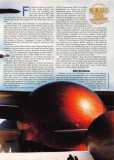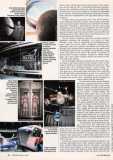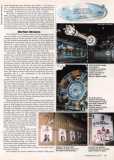For centuries, man has dreamed of the stars, staring longingly into the skies and wondering what secrets the universe might hold, what other forms of life might exist "out there." But for all our fascination with space, mankind's attention has always been captured by one planet more than any other.
Authors from Edgar Rice Burroughs to Ray Bradbury have chronicled stories of its inhabitants. Orson Welles turned an H.G. Wells novel about its invasion of Earth into a radio drama that sparked national hysteria. More than 40 attempts have been made to send unmanned spacecraft to investigate it. And some 100 films have been made about it — alternately speculating about whether this mysterious red planet is friend or foe. The subject of this intense and varied interest is Mars, one of the brightest objects in the night sky, and now — thanks to Disney's "Imagineers" — visitors to EPCOT at Orlando's Walt Disney World have the chance to experience it like never before.
At a cost of $100 million, Mission: Space (presented by Hewlett-Packard) is the most expensive ride ever created by the Walt Disney Company. The attraction combines advanced centrifuge technology with a sophisticated virtual-imaging system to deliver a pulse-pounding trip to Mars aboard the X-2 rocket, a sleek spacecraft inspired by real science and based on actual work by NASA scientists and the California Institute of Technology's Jet Propulsion Laboratory (JPL).
Mission: Space offers brave parkgoers a realistic and stomach-turning four-and-a-half-minute flight to Mars, and provides a genuine virtual reality journey that quite effectively brings one's imagination to life. Simulating actual space flight conditions, hazards and the requisite g-forces that accompany in-flight maneuvers, riders are treated to a tossing, turning, spinning and twisting experience that might make one re-think the decision to have a big lunch before-hand. (Ever attentive to guests' concerns, Disney's staff and an extensive array of warning signs make it clear that those with heart conditions, back problems or weak stomachs have opportunities to bail out on the mission before the capsule door closes for good.)
[…]





